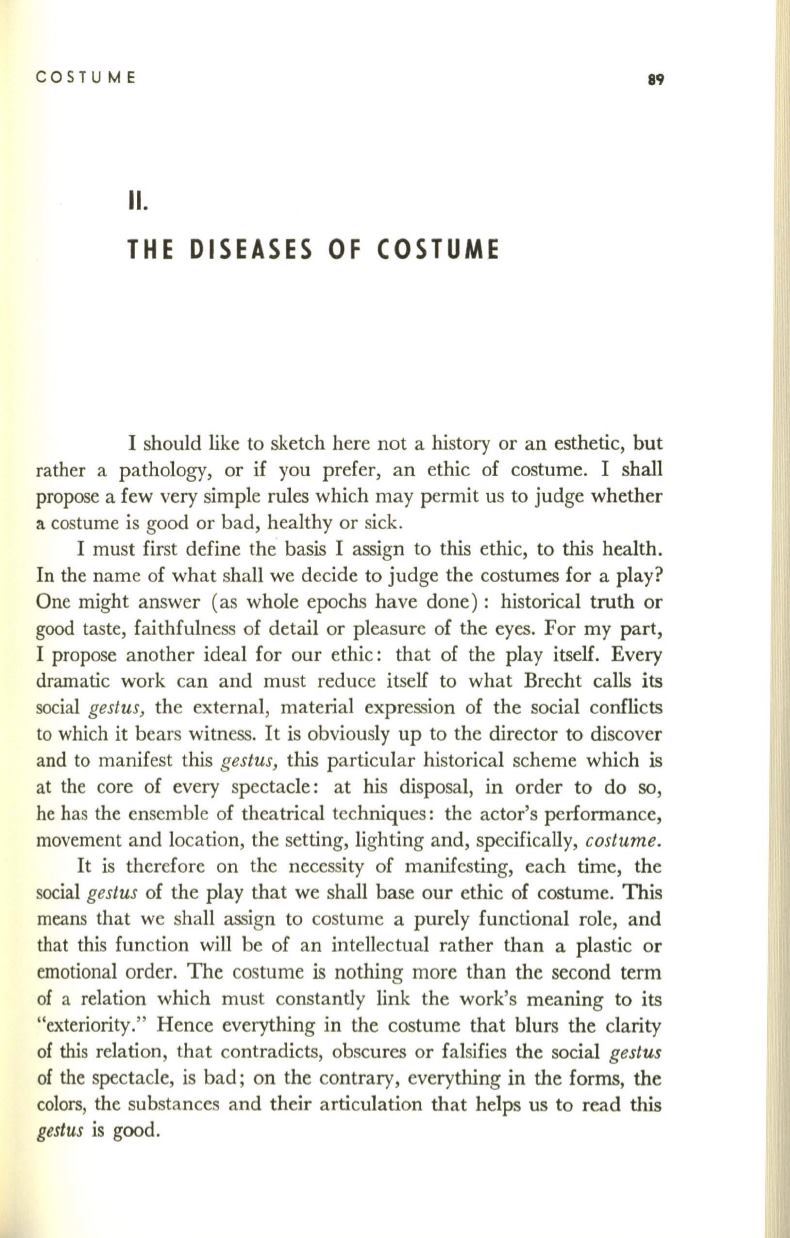
COSTUME
89
II.
THE DISEASES OF COSTUME
I should like to sketch here not a history or an esthetic, but
rather a pathology, or if you prefer, an ethic of costume.
I
shall
propose a few very simple rules which may permit us to judge whether
a
costume is good or bad, healthy or sick.
I
must first define the basis
I
assign to this ethic, to this health.
In the name of what shall we decide to judge the costumes for a play?
One might answer (as whole epochs have done): historical truth or
good taste, faithfulness of detail or pleasure of the eyes. For my part,
I propose another ideal for our ethic: that of the play itself. Every
dramatic work can and must reduce itself to what Brecht calls its
social
gestus,
the external, material expression of the social conflicts
to which it bears witness.
It
is obviously up to the director to discover
and to manifest this
gestus,
this particular historical scheme which is
at the core of every spectacle: at his disposal, in order to do
so,
he has the ensemble of theatrical techniques: the actor's performance,
movement and location, the setting, lighting and, specifically,
costume.
It
is therefore on the necessity of manifesting, each time, the
social
gestus
of the play that we shall base our ethic of costume. This
means that we shall assign to costume a purely functional role, and
that this function will be of an intellectual rather than a plastic or
emotional order. The costume is nothing more than the second term
of a relation which must constantly link the work's meaning to its
"exteriority." Hence everything in the costume that blurs the clarity
of this relation, that contradicts, obscures or falsifies the social
gestus
of the spectacle, is bad; on the contrary, everything in the forms, the
colors, the substances and their articulation that helps us to read
this
gestus
is
good.


